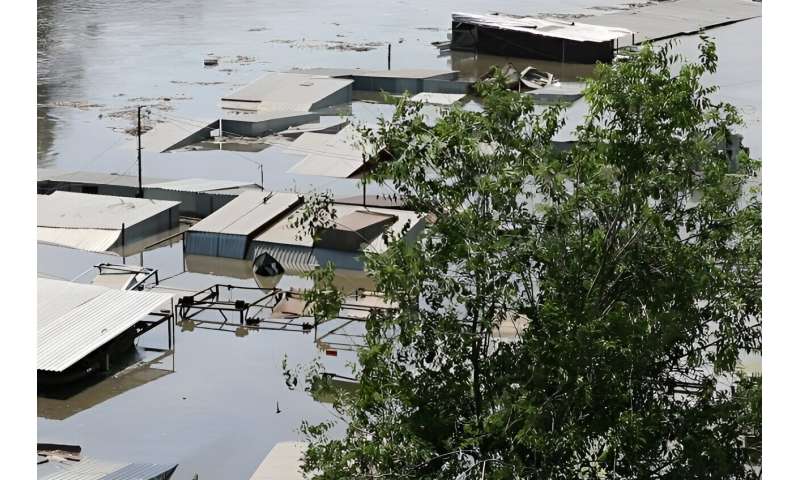On the morning of June 6, 2023, a substantial portion of the Kakhovka Dam in Ukraine—vital for water management and hydroelectric power generation—suffered a collapse while under Russian control. Russia had seized the dam early into its invasion of Ukraine, and though independent investigations suggested that Russia destroyed it to prevent a counterattack from Ukraine, Russia has denied responsibility.
New findings published this morning (April 3) in the journal Communications Earth & Environment, from a University of Houston spaceborne-monitoring team, indicate the dam may have had deformation hotspots before the war, pre-dating the actual collapse.
“Through our analysis, we observed displacements characterizing different segments of the dam, up to two years prior to the actual collapse,” reports UH assistant professor of Civil and Environmental Engineering Pietro Milillo. In the article, Milillo and team present the results of a methodology called InSAR (Interferometric Synthetic Aperture Radar) which measures infrastructure deformation from space with millimetric accuracy using radar images of the Earth’s surface collected from orbiting satellites.
The findings came about while the team was conducting a study monitoring the stability of infrastructure during the Russian invasion of Ukraine. By leveraging spaceborne technology, the team, including the German Aerospace Center (DLR) and the Delft University of Technology (TU Delft) uncovered previously unseen details of the pre-collapse of the dam and detected movements and deformations in the dam years before the collapse, providing valuable insights into its stability.

Flooding in Kherson after destruction of Kakhovka Dam 2023. © Wikimedia/Creative Commons

Using post-collapse images acquired by Umbra and pre- and post-collapse Sentinel-1 images, the University of Houston team identified two main breaches at the dam. © University of Houston
“This study highlights the significance of proactive monitoring and the role of remote sensing in ensuring the safety and integrity of critical infrastructure,” said lead author Amin Tavakkoliestahbanati, co-author and graduate student in Geosensing System Engineering in the Civil and Environmental Engineering Department at UH. “Our findings emphasize the importance of continuous surveillance to detect and address potential risks before they escalate into catastrophic events.”
“Only in recent times are we able to observe such phenomena thanks to the increased number of satellites flying in space capable of such measurements,” said Milillo, who is also a visiting scientist at DLR.
“Current hypotheses ascribe the collapse of the dam to an explosion that occurred on June 6, 2023. Although our analysis cannot exclude an explosion that occurred on that date, they can identify existing damage mechanisms that might have affected the dam before its collapse,” said Milillo.
Milillo said that the data in the study support the hypothesis that the structure was moving downward since June 2021. “With the beginning of the war, neglected dam maintenance and operations might have destabilized the structure over specific areas, favoring the development of the above-mentioned mechanisms,” he said.
The research not only offers valuable insights into the events leading to the collapse of the Kakhovka Dam but also underscores the potential of InSAR as a proactive monitoring tool for infrastructure stability assessment.
As the world faces increasing challenges related to climate change and geopolitical instability, such studies pave the way for more informed decision-making processes and enhanced risk assessment strategies. InSAR’s ability to detect and quantify ground movements with high precision and over extended periods of time contributes to enhanced risk assessment, forensic engineering activities and informed decision-making processes.
More information:
Amin Tavakkoliestahbanati et al, Pre-collapse spaceborne deformation monitoring of the Kakhovka dam, Ukraine, from 2017 to 2023, Communications Earth & Environment (2024). DOI: 10.1038/s43247-024-01284-z
Provided by
University of Houston
Citation:
Research reveals pre-collapse monitoring of Kakhovka Dam, Ukraine (2024, April 3)



